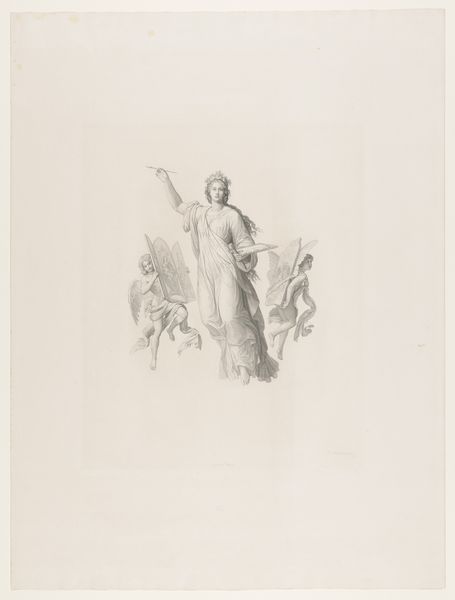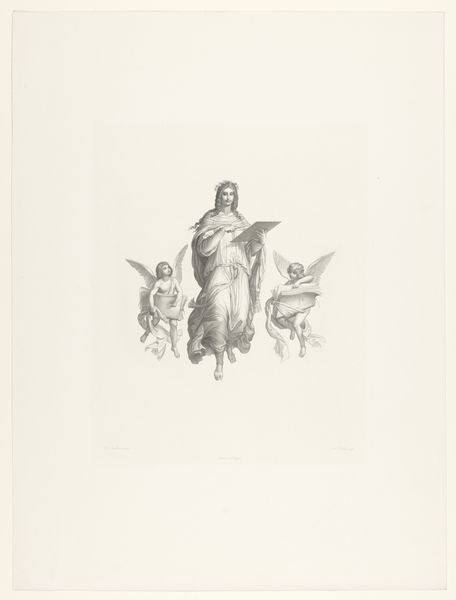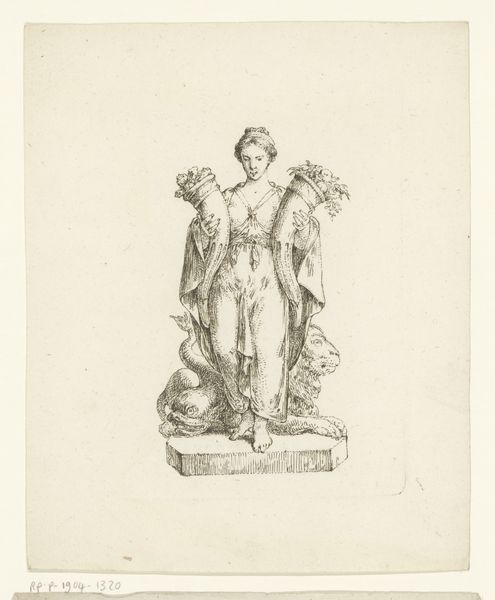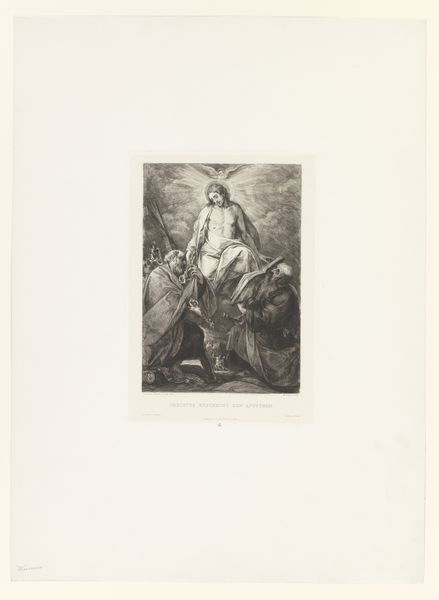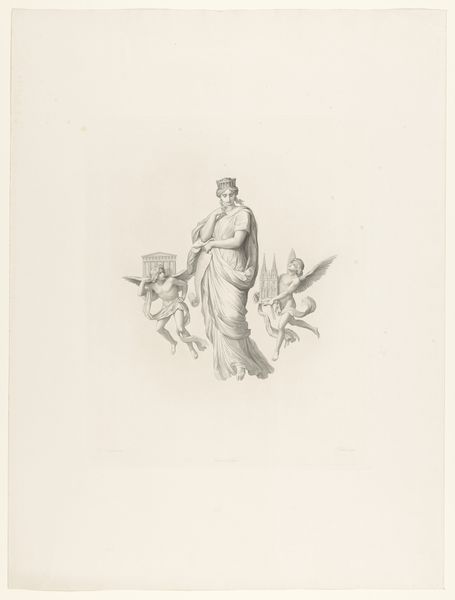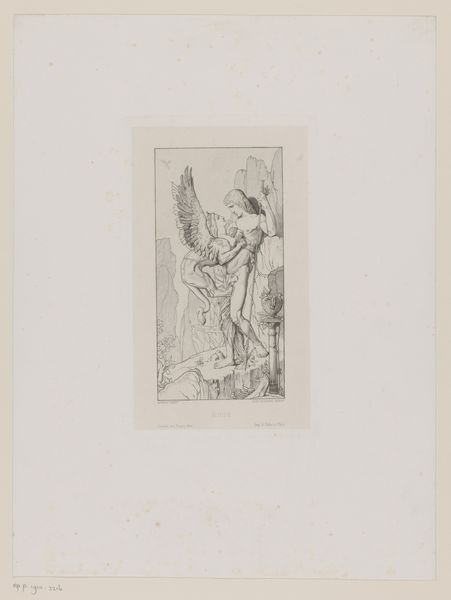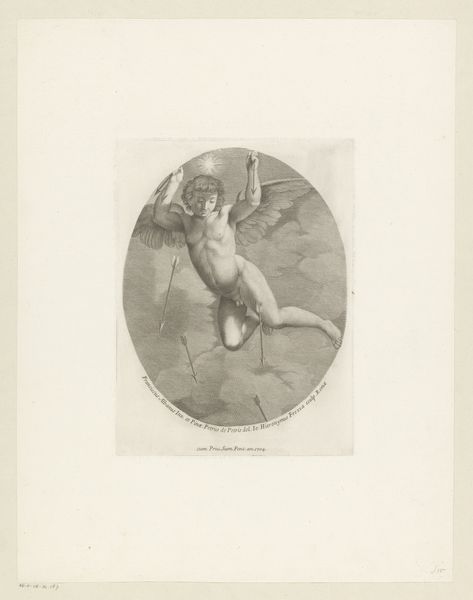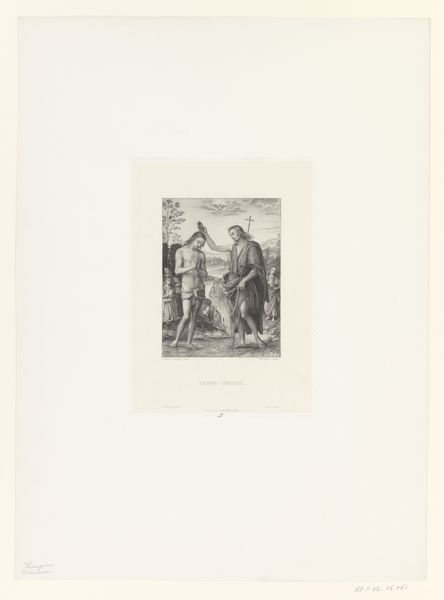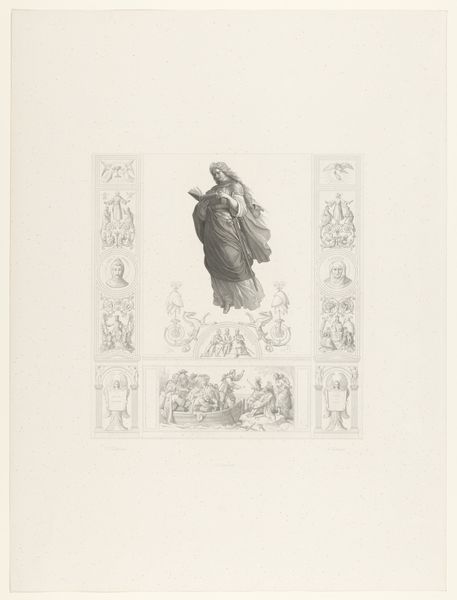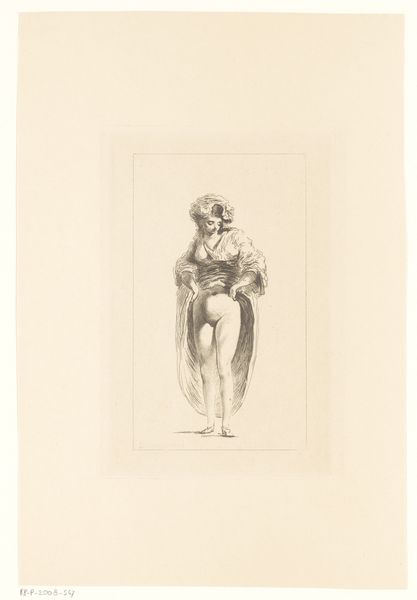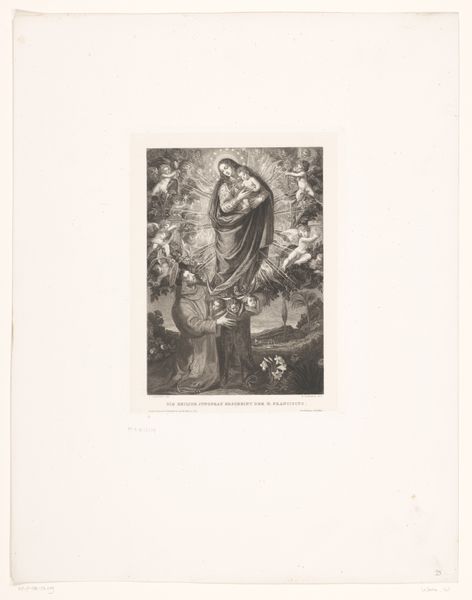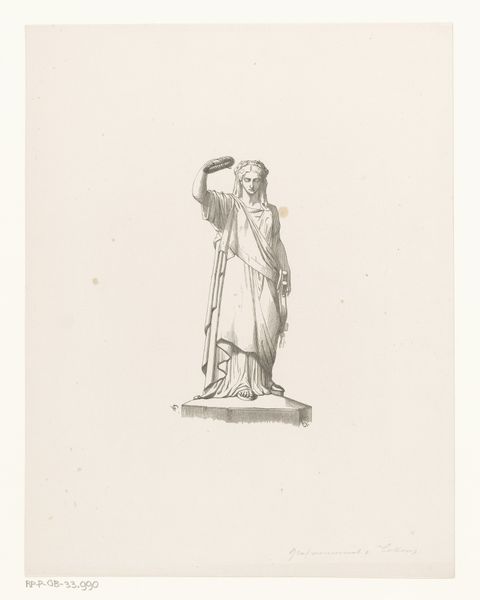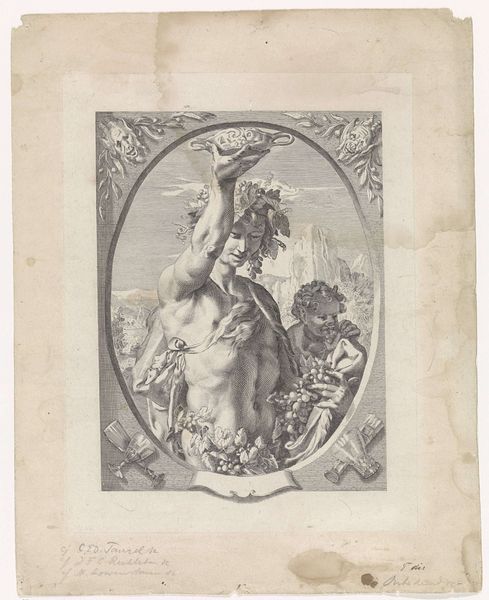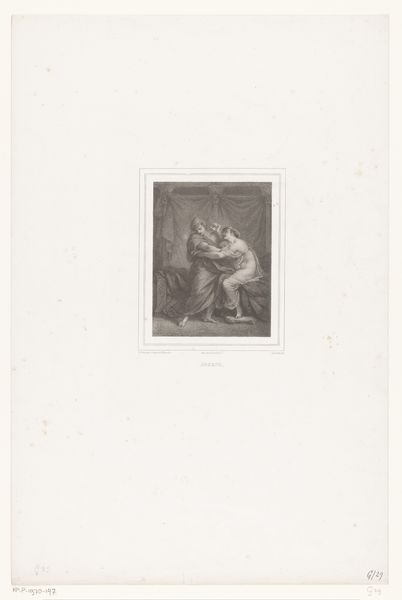
print, engraving
#
neoclacissism
#
allegory
# print
#
figuration
#
academic-art
#
engraving
Dimensions: height 488 mm, width 395 mm
Copyright: Rijks Museum: Open Domain
Curator: Allow me to introduce "Allegorie van de Beeldhouwkunst," or "Allegory of Sculpture," a print by Albert Teichel, worked on between 1832 and 1873. It currently resides here at the Rijksmuseum. Editor: It's quite stark, isn’t it? The composition almost floats on the page, this ethereal grayscale. The goddess has such commanding presence. Curator: Yes, that feeling is by design, absolutely intentional. Consider that it stems from the Neoclassical movement, revived interest in antiquity, right? You have the allegorical figure, the idealized form of the woman as a sculpture, reflecting an imagined perfect form, even her crown speaks to classicism Editor: And surrounded by cherubic figures…almost cherubic cupids—each seemingly presenting or guarding artifacts? What are they offering? Curator: One holds up a sculpted figure, drawing an explicit link to the act of creation. The other shows what appears to be an antique bas-relief… They aren’t merely decorative; they illustrate the act and attributes linked to sculpting, with its historic, social, and spiritual meaning as an esteemed practice. Editor: Right, that classical link between artist, patron, and subject as part of that grand narrative around civilization building. But aren’t allegories sometimes loaded, especially those promoting an artistic or political perspective? Curator: Indeed. Teichel's piece, I suggest, invites us to contemplate not only what we venerate in art but, furthermore, who dictates the values we choose to immortalize and why. Editor: True. I was initially struck by the clean, confident lines, the sort of calculated simplicity…now I see there is the historical echo chamber where meaning multiplies! Curator: It certainly leaves an imprint once one acknowledges that grand and burdened historical context behind this image! Editor: So, on second look, I notice that it is a lot more than simply light and shadow and the perfect female form.
Comments
No comments
Be the first to comment and join the conversation on the ultimate creative platform.
